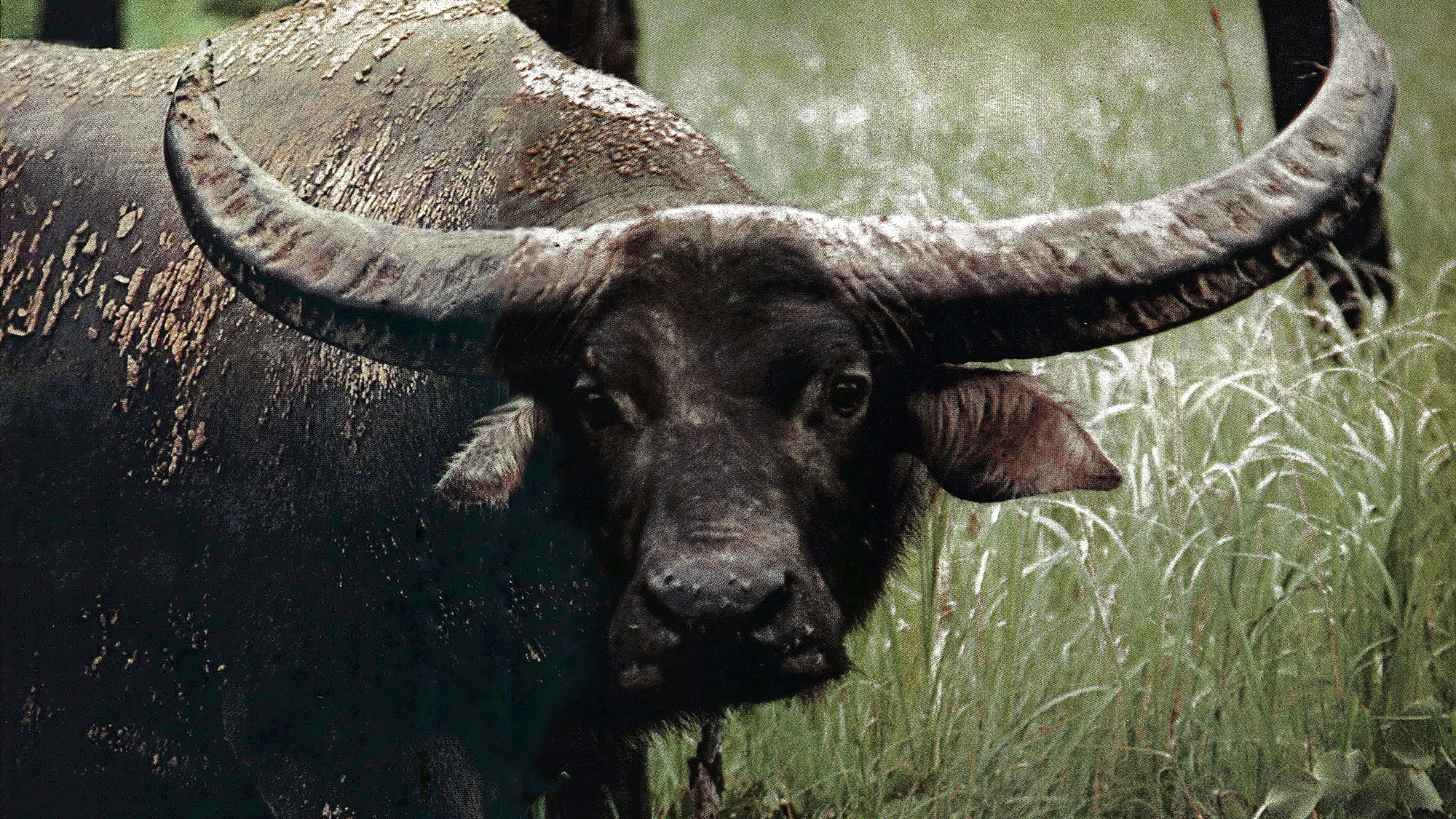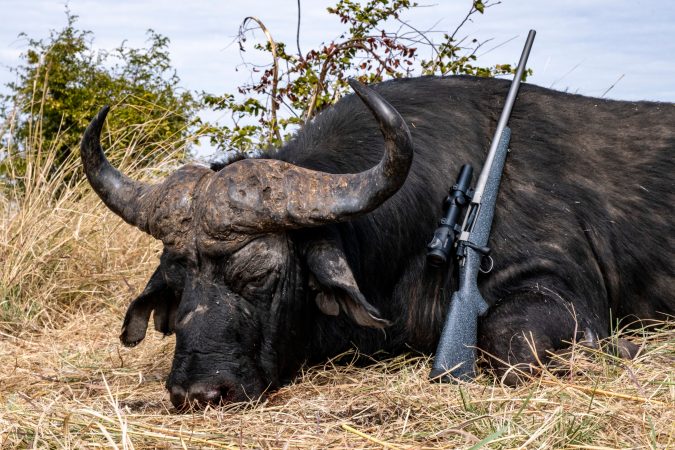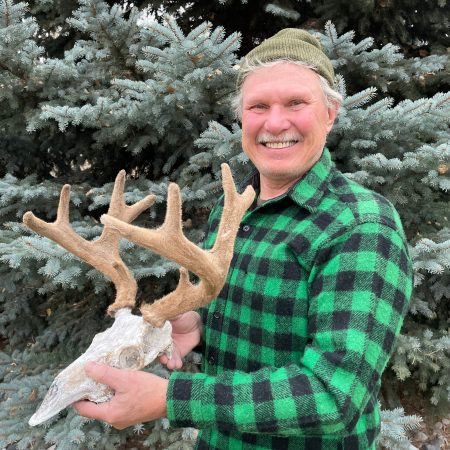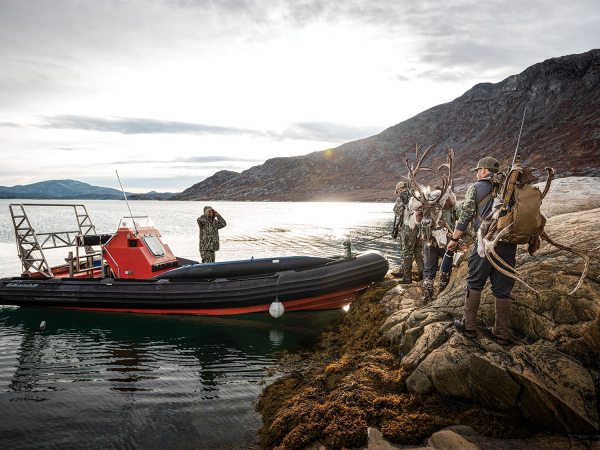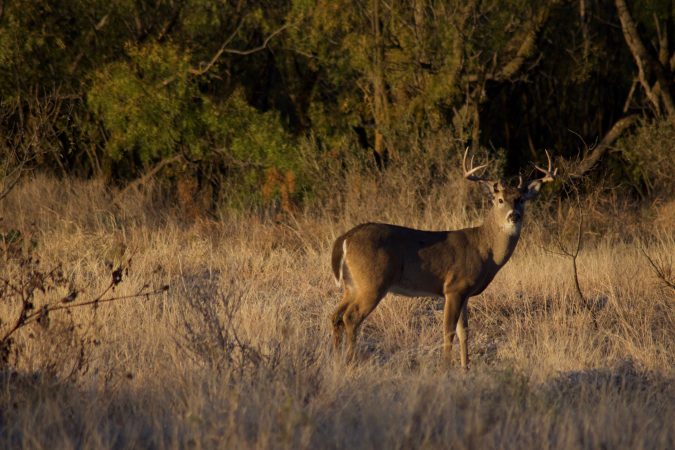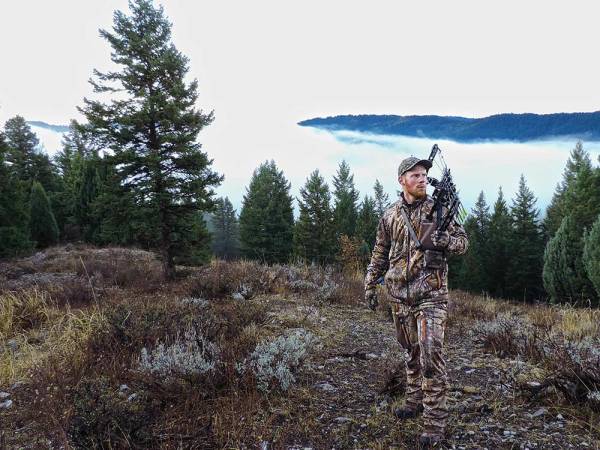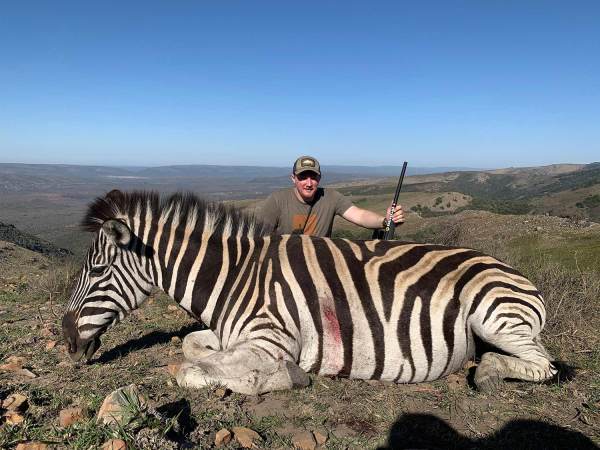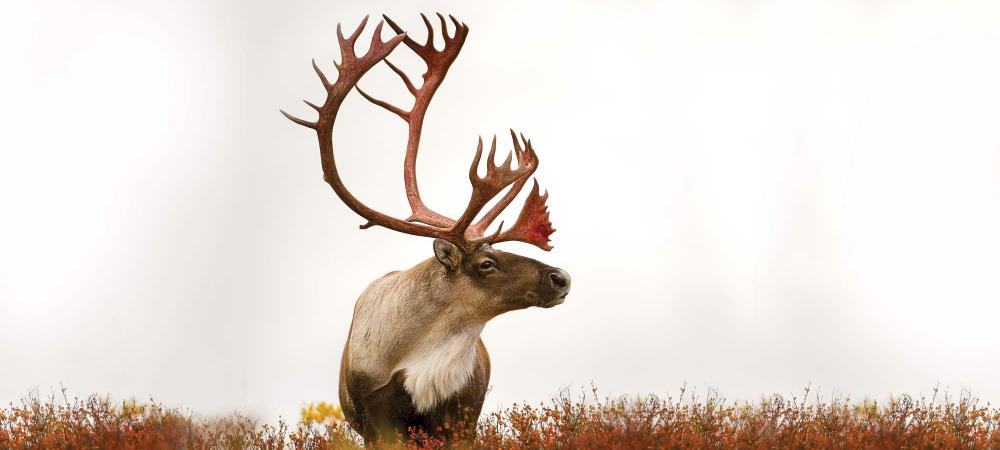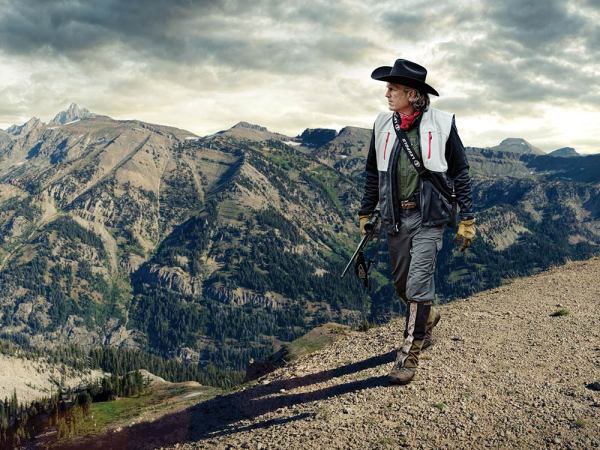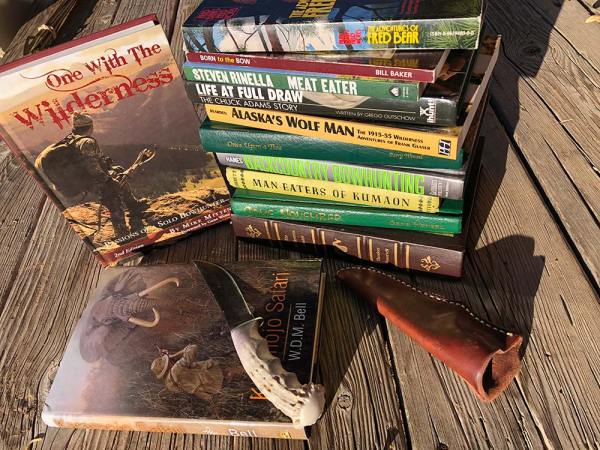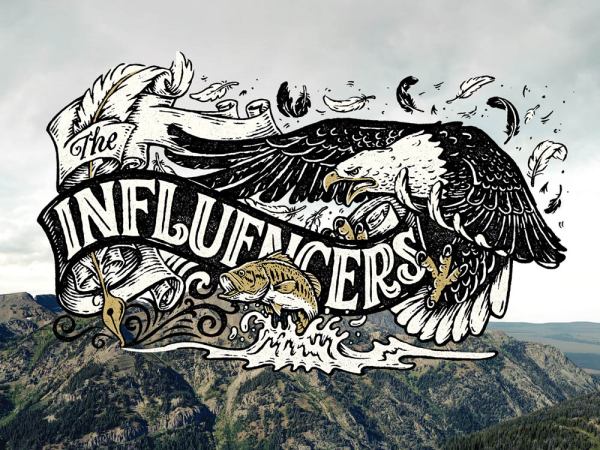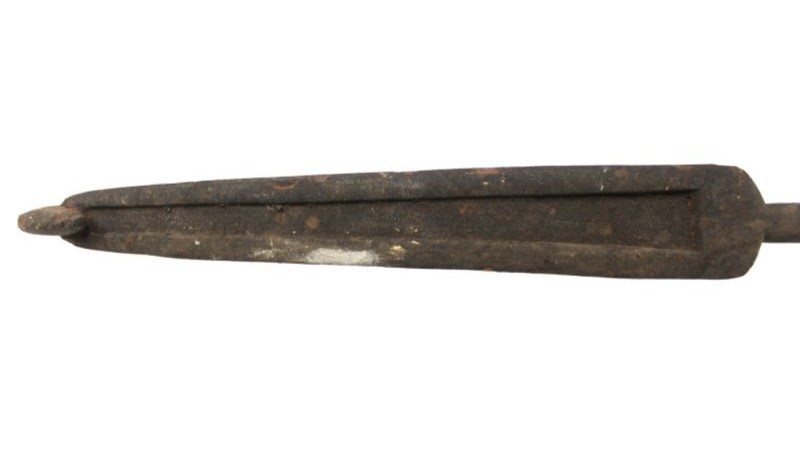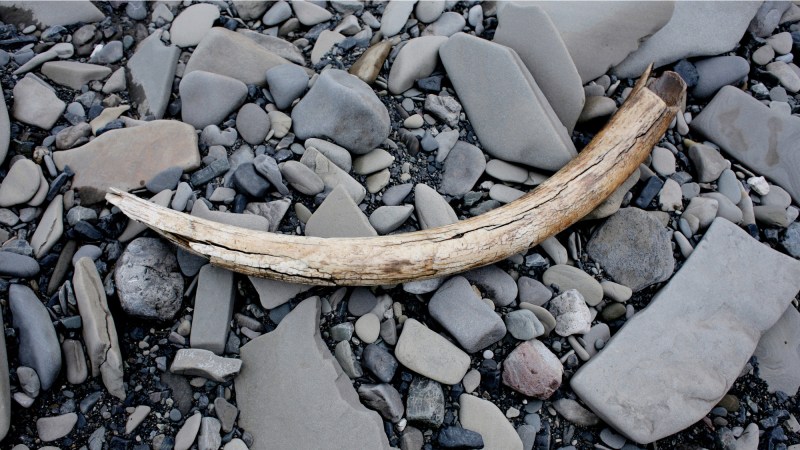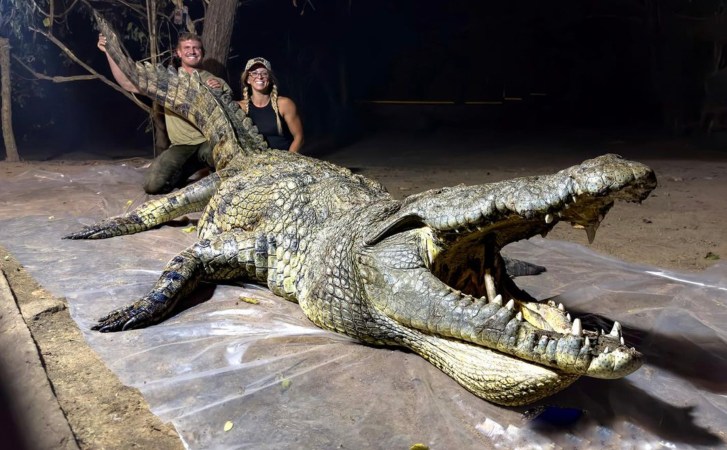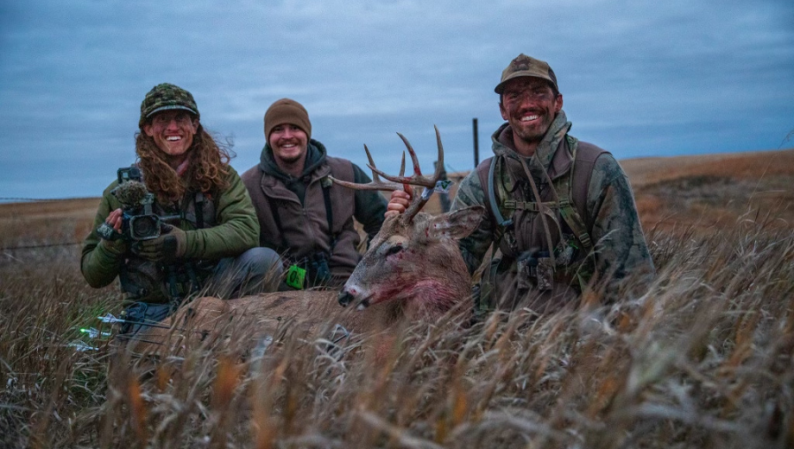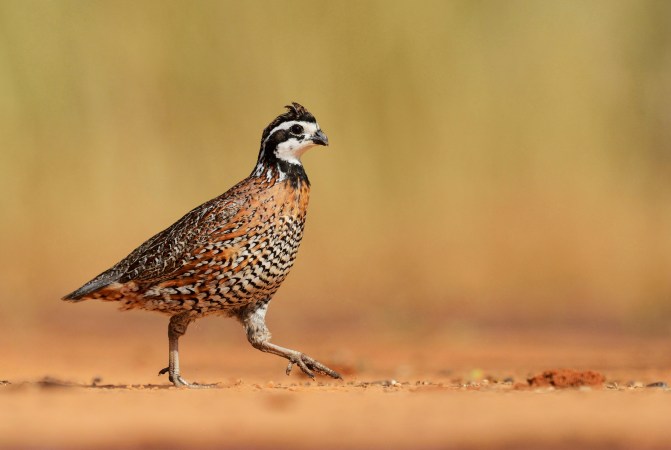MY TIRED AND sweat-soaked companion, Fred Huntington, had no way of knowing it then, but his decision to go back to the truck for a rest while I went ahead to check on a couple of wallows may very well have cost him some of the most spectacular motion-picture footage ever made of a charging water buffalo.
But I have to admit that it sure looked as though Fred had the right idea. The tropical sun was at its zenith, and the humidity fairly steamed out of the mushy landscape. If one stayed in the shade and sat very still, life was just manageable. But we were slogging through billabongs after buffalo (billabong is the Australian term for a lagoon or rain-filled floodplain), and the rivulet of sweat that began behind my ears and cascaded between my shoulder blades had long since plastered my shirt and walking shorts to my skin.
It was early February, and we were hunting the giant Asian buffalo in Australia’s wild “top end.” Because the Island Continent lies below the equator, summer comes there when it’s winter in North America. It was midsummer and the height of the tropical monsoon season. The coastal areas of the vast Northern Territory, Australia’s northernmost district, had become a sea of tepid, adobe-colored water.
Ordinarily you would hunt buffalo there during the cooler and dryer winter months, but Fred, his wife Barbara, and I were on our way home from a sheep hunt in Iran. During our stopover in Australia, the chance to hunt the big buffalo was too alluring to pass up. The Huntingtons live in Oroville, California, where Fred is the top man at RCBS, the well-known makers of rifle and pistol reloading equipment. He wanted to stop by some of the larger Australian cities to see his distributors.
Fred had hunted buffalo in Australia a couple of years before and had such an exciting hunt that he suggested I try for one of the huge black bulls while he made a movie of the action.
As every schoolboy knows, Australia is the home of an absolutely mindboggling assortment of wild creatures. Everything from frogs that kill dogs to ants that build bridges can be found there, and the hunting is fabulous.
Much of Australia’s hunting has in one way or another been profit-motivated. Kangaroos provided the leather for countless pairs of American baseball shoes. The dingo, a wild dog, was relentlessly pursued to protect the vast Australian sheep industry. And rabbits, a foreigner to the Down Under country until a few were accidentally released over a century ago multiplied in such numbers that in some areas a farmer’s survival was a matter of man against bunny.
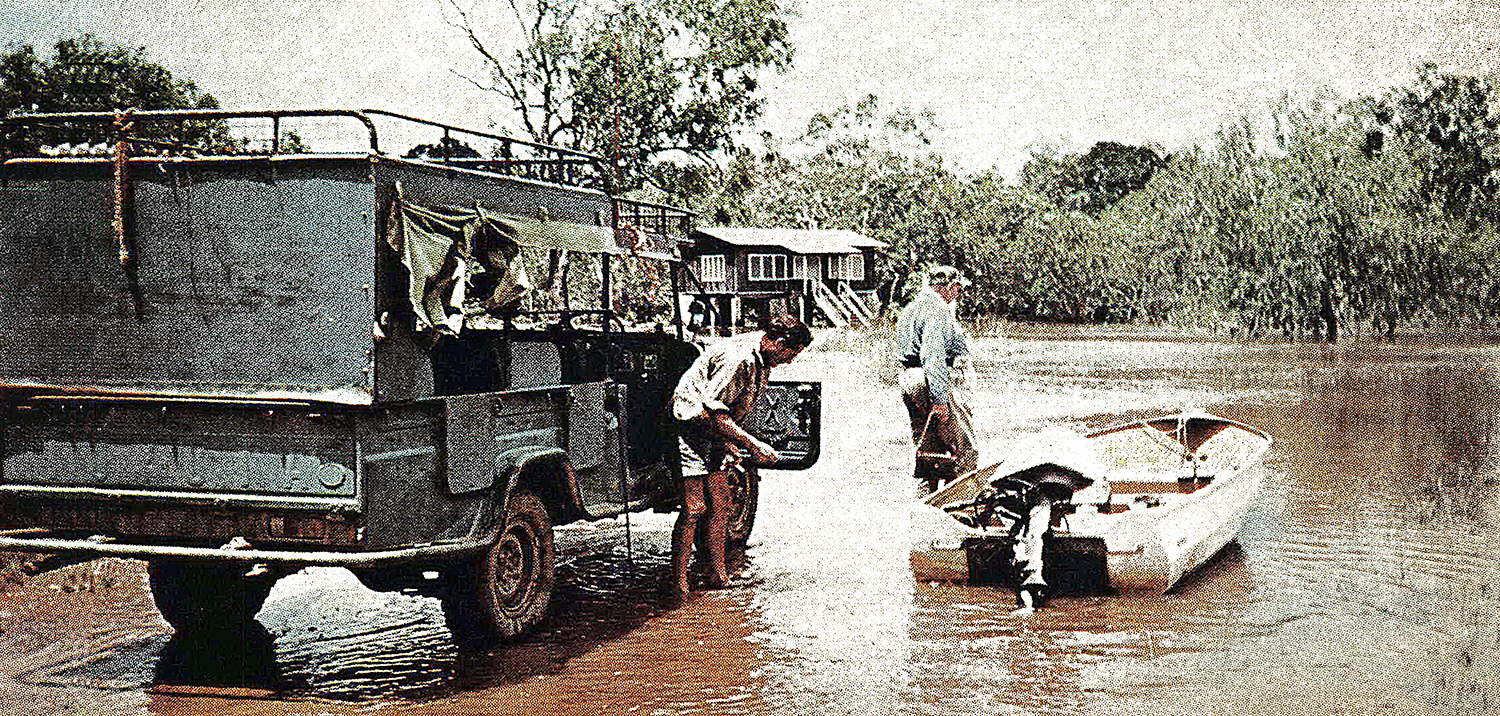
For sheer size, however, nothing on the continent challenges the huge Australian buffalo. Like the rabbits, buffalo are not true natives but were introduced back in the 1800’s. Asian water buffalo were brought to the steamy shores of Northern Australia to be used for plowing and other farm chores. These natives of the tropics were better able to survive in their new home than were the farmers who sought to conquer the Northern Territory. As the farms closed down, the buffalo were released into the wild and, like the rabbits, reproduced in enormous numbers.
Coal black, weighing upwards of a ton, and carrying a set of rearwardcurving horns that can span over six feet, the Australian buffalo is a rugged customer and a worthy opponent for any sportsman. For sheer manstopping orneriness he is not quite the equal of his cousin, the African Cape buffalo, but Australian buffalo maim and kill enough chaps to keep you looking over your shoulder when you think a buffalo might be in the neighborhood.
Our guide told us that when the pods of a local palm tree get overripe and rather alcoholic, they are eaten by the buffalo, and for a while the woods are full of crazy-drunk, mean-tempered beasts that charge everyone and everything that happens along.
These Asian buffalo, contrary to some opinions, are not just descendants of domestic work animals. The draft animals brought to Australia were themselves only one or two generations removed from the wild Indian buffalo. Thus the Australian variety has not “gone” wild but merely has reverted to its natural state, with all the cunning and sense of selfpreservation of any wild game animal.
In one day’s hunting I got to within shooting distance of a half-dozen or so, but after they decided what I was and what I was up to they charged off, snorting and flailing their tails, into the dense brush. Their behavior reminds me of the Cape buffalo I’ve hunted in Africa: curious enough to stand and watch you approach but capable of a quick disappearing act when they catch human scent or otherwise sense danger.
When Fred hunted in Australia a couple of years before, he bagged a huge bull with horns measuring several inches over six feet. Then, as on our recent trip together, he was guided by Don McGregor, the master of Patonga Lodge and one of the best known fishing-and-hunting guides in the Northern Territory.
Don’s hunting concession includes exclusive access to some 1,100 square miles of government-owned wilderness land, and each year he is granted a quota of buffalo that may be bagged by his clients. In addition to buffalo, Don offers hunting for waterfowl, wild boar, and dingo — and some fantastic fishing.
The local barramundi, a basslike tacklebuster, is the most delicious fish I’ve ever tasted. The cost of eight days of hunting with Don is 1,000 Australian dollars (about $1,300 U.S.)* for one hunter. For a party of three the cost is reduced to about $700 per hunter. This includes everything: guiding, food and lodging, and trophy preparation. There are no license fees or other incidental costs.
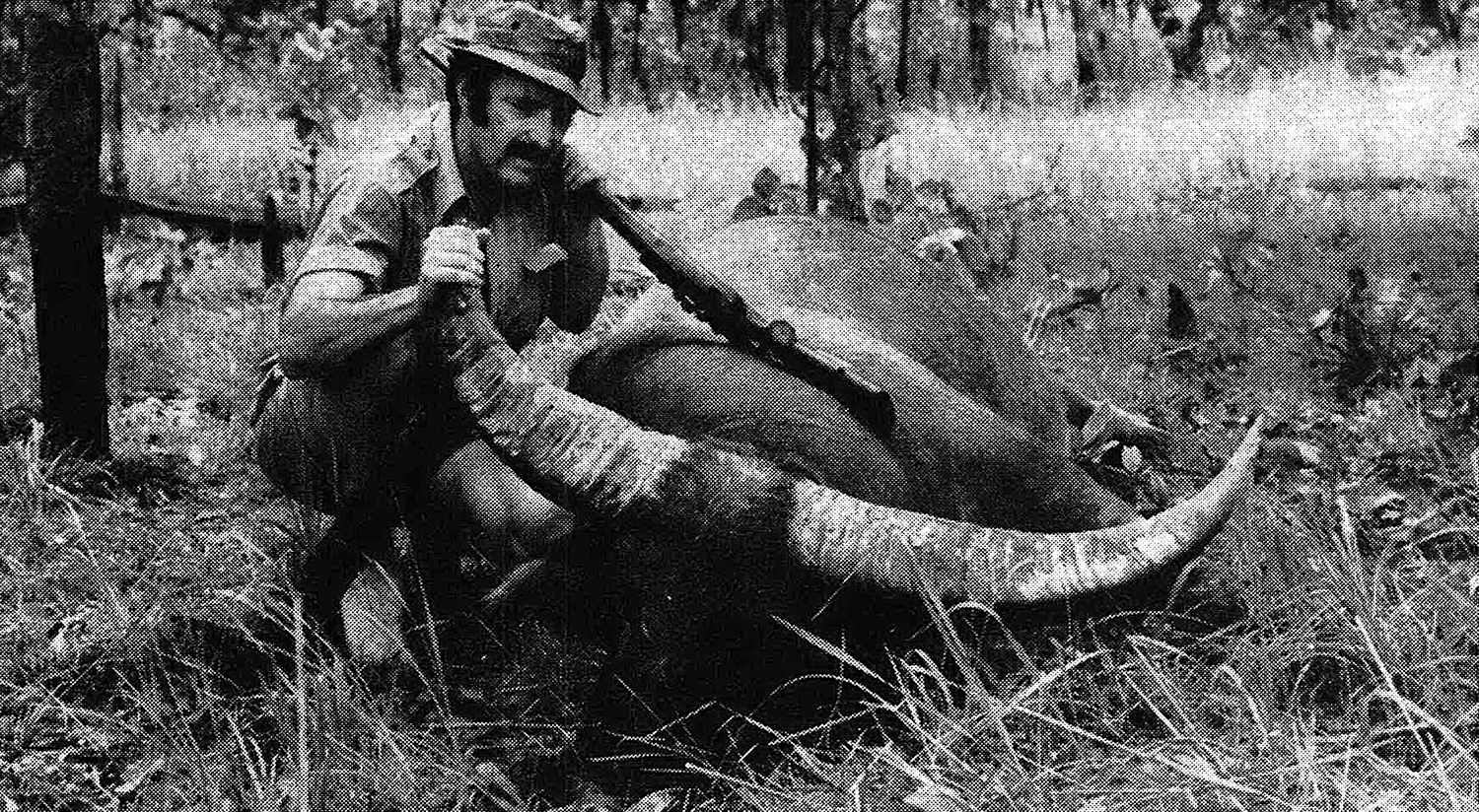
Getting a rifle into Australia involves more red tape than Fred Huntington and I thought it was worth [it], so with a promise from Don that I could use his rifles, we shipped our two .280’s home from Iran. As it turned out, Don is a rifle nut of the first water and handloads his own ammunition. The rifle he had ready for my hunt was a Czech-made Brno bolt gun in .30/06 caliber and topped off with a 4X scope. Ordinarily McGregor favors the .375 Holland and Holland for the big buffs, but for the moment the ’06 was all he had to offer. I was soon to find out first-hand why Don prefers the big bone-crushing magnums.
McGregor’s Patonga Hunting Lodge is about 150 air miles east of Darwin, near Jim Jim Creek (a “creek” that would equal a major river in most parts of the world) and not far from the Woolwonga Aboriginal Reservation. During the dry winter months Patonga can be reached by road, but in summer the daily cloudbursts change the roadbeds into surging rivers and the lodge is surrounded by water. The only way in then is by air and boat.
At the beginning of the wet season Don parks vehicles on high ground in different parts of his hunting territory so he’ll have some transportation when the rising water changes the gently rolling landscape into islands. Outboard boats are then used to commute from island to island.
I got an idea of how this works when the Huntingtons and I flew from Darwin to a bush strip near the Jim Jim by charter plane and were met by Don. We had only about a three-mile drive before the road dipped into a mile-wide stream. There we put our gear into a boat, crossed the swollen creek, and transferred our stuff into another truck. From there we drove to Patonga.
Before Don opened his hunting lodge a dozen years ago, he had been a crocodile hunter whose bare-handed exploits made him a legend before he was 30. It’s hard to find a book on modern Australian hunting that doesn’t mention his adventures.
Besides Don, his wife Sandy, and their son Rodney, the lodge is staffed by Mick, a very pleasant young Aborigine who speaks with a crisp British accent and is the son of the legendary Yorky Billy, the Australian counterpart of Buffalo Bill Cody.
I looked where Don was pointing but could see only a dark hulk glistening with slime and so deep in the wallow that I couldn’t even make out which end was which. An instant later, though, all doubt was gone.
On the day of our arrival Mick was checking out the buffalo herds and trying to locate some trophy bulls. Buffalo are great swimmers and move from island to island with such ease that finding them at any given time is largely a matter of luck. That evening Mick said he had seen an especially good bull on an island 15 to 20 miles away, but the animal was not with a herd and would probably be hard to find again. However, Mick had followed the bull a good part of the day and could tell Don approximately where the old buff’s mud and wallows were. During the heat of the day buffalo like to take their ease in cool mud wallows; if you can find the wallows you can usually find the buffs. Luckily Don had a truck parked on the island where Mick had spotted the bull. That might save us miles of walking — provided the bull didn’t decide to swim to another area.
Next morning, over a hearty breakfast, Don set me straight on what we were in for. I had the false notion that wet-season hunting was a series of island-hopping jaunts and that the game could be spotted from a boat. This might be true in some instances, but the island on which Mick had spotted the big bull was at least 20 miles across and densely covered with palms, palmettos, and hardwoods. The truck would be helpful only for getting us to the general area where the big bull was last seen. But from then on, we would be wading billabongs and churning through mudflats.
The trip to the island was an hourlong boat ride through a forest in which bright-blossomed vines slowed our progress and spider webs as big as 10 feet across caught our faces. Toward the end of our trip we cruised above a roadbed, now under three feet of water, and even passed a stilt-legged grocery store and tourist shop, each bearing signs “Closed for the rain.”
Don’s truck was parked on a paved road that led down a long grade and simply disappeared into 10-mile-wide Jim Jim Creek. By then the sun was high and the air was becoming slightly hazy with its burden of humidity.
During the next hour or so we spotted eight or nine small herds and some fine buffs, but they would charge into the bush as soon as we got within 100 yards or so. Most were cows and calves, and the only mature bulls were on the smallish side.
I must admit that I was beginning to hope that we would spot a shootable bull not too far from the road. As morning gave way to midday, the temperature soared and the atmosphere turned to live steam. The prospect of a long hike in that climate was not particularly appealing to me.
For a moment I thought I was in luck when we came across a fine old bull that was inclined to stand his ground as we drove to within 100 yards of him. With Fred’s movie camera whirring in the background, I got my first good look at a trophy-size Asian-buffalo bull. The horns were as black as his hide and grew straight out from his head for a foot or more before beginning a rearward sweep. They were as wide as those on any of the mounted heads I’d seen back in Darwin, but this bull was not the one we wanted — the one Mick had spotted earlier.
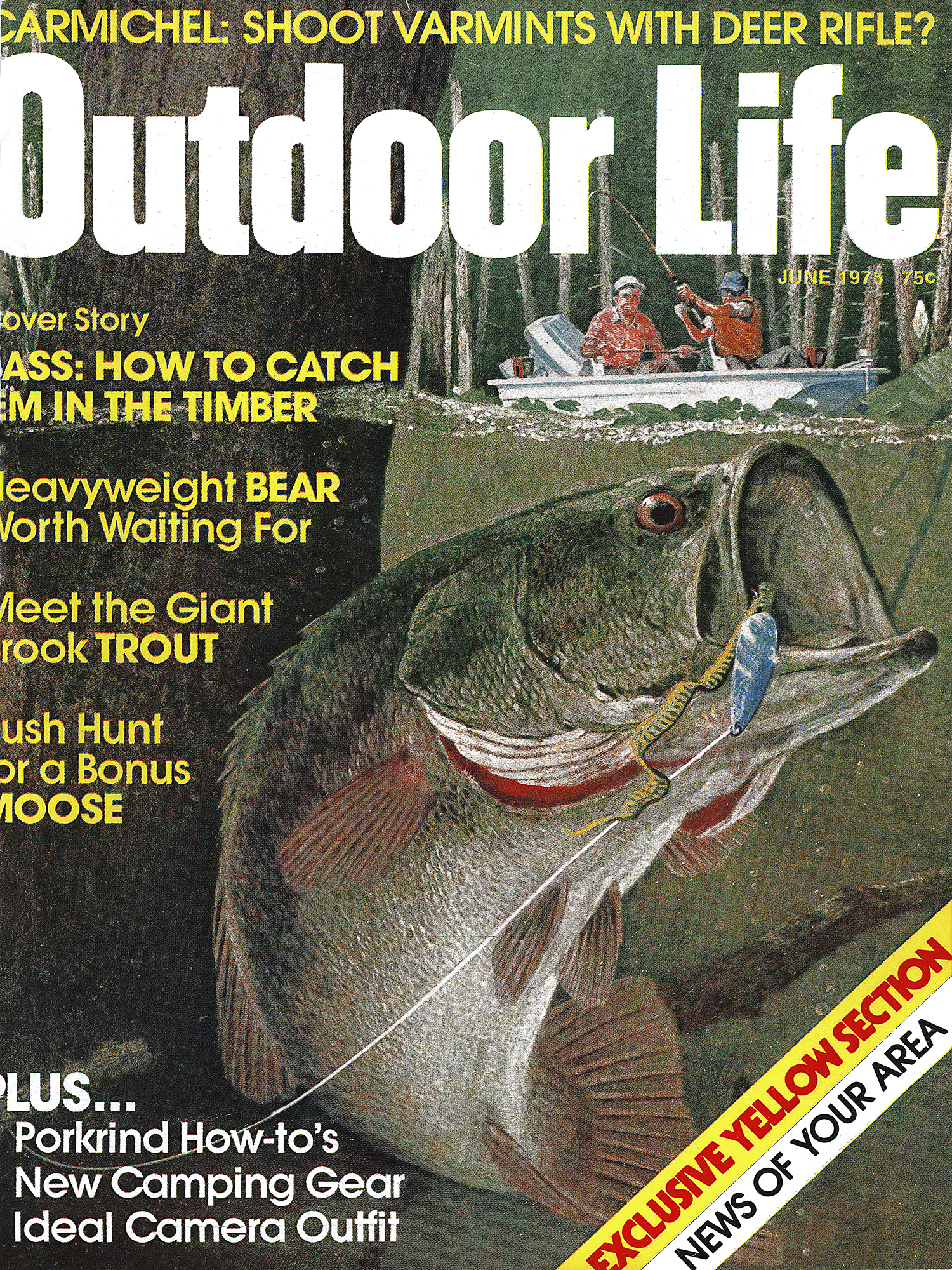
After we got under way again, another bull broke out of the cover, dashed across the road, and crashed into some thick brush not more than 50 yards ahead.
“Am I seeing things, Don, or was that a red buffalo?” I asked.
“You’re not seeing things. That bull has traits of albinism. Let’s get out and see if we can find him. If we get another look be sure to notice his nose. It will be as pink as a baby’s foot.”
Don eased the truck to a stop under a low tree, and we slipped out and fancy-footed our way around the patch of dense growth into which the bull had disappeared. A moment later the animal crashed out of the brush, galloped halfway across a grassy clearing, then skidded to a stop and spun around to face us. For an instant it looked as though he was about to have a go at us, but his curiosity had gotten the best of him, and he only wanted another look. His nose was pink, just as Don had predicted.
An hour later we came to the swampy lowland where Mick had spotted the big bull the day before.
“There are four or five wallows within a mile or two of here,” said Don. “We’ll move slowly and check them out one by one. If we jump him you’ll have to shoot fast because in this cover he’ll vanish in a second.”
Fred wore knee-high rubber boots, but — like Don — I was barefoot, and as we moved through the swamp the warm black muck oozed between my toes and brought back memories of stalking bullfrogs in farm ponds.
We followed a circular route of about three miles and found three or four spots where our quarry had been rolling in the mud, but there was no sign of him. It looked as though we had missed him entirely, but Don said we could check a couple of other wallows. At that point Fred elected to head back for the truck and wait for us.
Don and I had not gone much more than a quarter-mile when he suddenly stooped low to get a better look under some trees ahead.
“There he is,” he hissed. “He’s asleep in that mudhole ahead.”
I looked where Don was pointing but could see only a dark hulk glistening with slime and so deep in the wallow that I couldn’t even make out which end was which. An instant later, though, all doubt was gone. With a throaty bellow the bull heaved his bulk out of the hole and stood snorting at us with his head down.
He was facing us head-on, so I centered his chest with the crosshairs and pressed the trigger. It was a good shot. It had to be — the range was 50 yards at most, and through the scope the target looked as big as a truck.
When the 180-grain slug hit him he only gave a slight twitch and then charged us. My second shot, meant more to stop the charge than to kill, caught him near the joint of his right shoulder and caused him to swerve and angle by us a few yards to our right. My third shot, rapid-fired into the same shoulder, seemed to have no more effect than the first two, but before he had gone another 20 steps his legs collapsed and his giant bulk crashed into the ground.
Don’s preference for the .375 H & H was by then easily understandable. My first shot into the bull’s heart was the bullet that killed him, but he could have done some very unpleasant things before he fell. The shoulder shot turned him just enough to save us, but the ’06 just didn’t have as much punch as I would have liked.
Don and I were struggling to roll the bull over to check where my shots had hit when Fred came dashing up.
“What’s all the shooting about?”
“Well, old buddy, it’s like this,” Don answered. “If you’d been here three minutes ago…”
“Never mind that,” I interrupted. “Just help roll this big fellow over, and we’ll carve out some dinner steaks.”
This story, “Billabong Buffalo,” first ran in the June 1975 issue of Outdoor Life.
*The fee of $1,300 in 1975 would cost the equivalent of about $7,300 in 2023.
